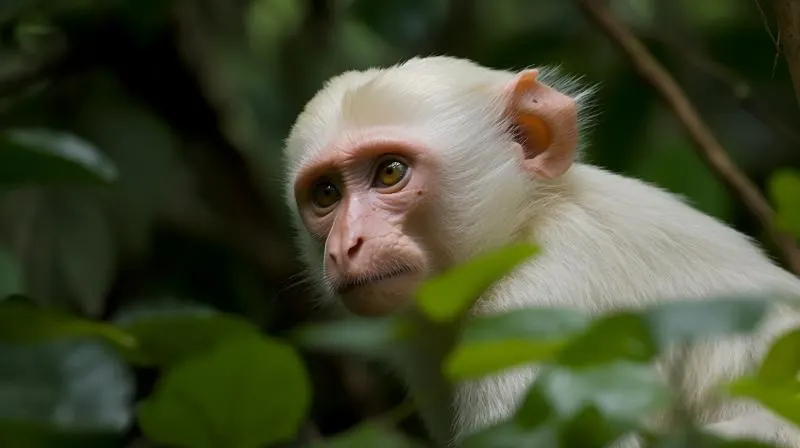Have you ever seen your pet dog after a fun game of fetch or your cat while being stroked peacefully and wondered if they were actually smiling at you? The concept of animals expressing emotions similar to humans has been a subject of interest, sparking numerous debates within the scientific community.
This blog post delves into the realm of animal behavior, seeking answers to whether our furry friends can really flash us a grin or if it’s all just wishful anthropomorphism. Be prepared to embark on an incredible journey that will challenge your conventional perception of animal emotional expressions!
While animals may not smile in the same way humans do, they can exhibit expressions and behaviors that resemble smiling. For example, dogs can make their faces appear to smile by opening their mouths and pulling back their lips. However, it’s important to note that interpreting these expressions as signs of happiness should be done cautiously, as animals communicate primarily through body language and actions.
Animal Facial Expression: Myths and Facts

When it comes to animal behavior and communication, facial expressions play a vital role. However, it is essential to tread carefully when interpreting these expressions as myths and misconceptions often surround them. While humans may associate certain facial expressions with emotions like smiling, it’s important to understand that animals express themselves differently.
For instance, we tend to interpret a dog’s open mouth and pulled-back lips as a smile. Still, in reality, this behavior is more related to relaxation or response to human smiles rather than an expression of happiness.
Different species have varying modes of expressing their emotions through facial expressions and body language. It’s crucial to consider the specific context in which these expressions occur and be mindful of any scientific studies or research conducted in this field.
Decoding Animal Smiles

Human beings are familiar with the concept of smiling; it’s an expression that is commonly associated with happiness. But can animals also smile? The answer may not be as straightforward as we might think.
Just like laughter, which varies across species, the concept of smiling does too. In most mammals, baring teeth indicates aggression rather than happiness. For example, when a dog bares its teeth, it’s generally a warning sign.
However, some researchers argue that certain animal behaviors can be loosely compared to a smile in humans. One such example is the wagging tail in dogs. They often wag their tails when they are happy or excited, which could be seen as an analogous expression to a human smile.
It’s important to note that animal facial expressions and behaviors can vary significantly between species, and even within the same species, depending on the context. Therefore, it requires careful observation and understanding of each animal’s unique communication system.
Now that we’ve explored some background information about animal facial expressions and debunked the myth of animal smiles, let’s delve into the fascinating scientific methods that researchers use to study animal emotions.
- Research on Western Lowland gorillas showed they use a full play face (PF) where the upper teeth are exposed, which is observed more often during intense play and associated with longer play bouts.
- Dogs, another common pet, display what may look like a smile by opening their mouths and pulling back their lips, primarily when they are relaxed or responding to human smiles.
- Unlike the human expression of a smile, in most mammals, baring teeth usually indicates aggression rather than happiness or appeasement.
Scientific Methods in Studying Animal Emotion

Understanding the emotional lives of animals has long been a topic of interest for scientists. However, delving into this realm requires specialized scientific methods that can shed light on their emotions and behaviors. Researchers employ a range of approaches to study animal emotion, including careful observation, behavioral analysis, and physiological measurements.
Through meticulous observation in their natural habitats or controlled laboratory settings, scientists can identify specific behaviors and expressions that indicate an animal’s emotional state. They carefully watch for body language cues, facial expressions, vocalizations, and changes in behavior patterns that may reflect emotional experiences.
Behavioral analysis involves analyzing data gathered from long-term studies or experiments to identify patterns that relate to emotional states. This could include examining the frequency and duration of certain behaviors or identifying correlations between environmental stimuli and behavioral responses.
In addition to behavioral analysis, scientists also make use of physiological measurements to gain insights into animal emotions. This includes monitoring heart rate, cortisol levels (a stress hormone), brain activity through EEG (electroencephalography), and other indicators of physiological arousal or relaxation.
Now that we have an understanding of the scientific methods employed in studying animal emotions, let us explore a fascinating case study: Do dogs smile?
See Related: Unearth the Value: How Much Is a Megalodon Tooth Worth Today?
Case Study: Do Dogs Smile?

Dogs have been our faithful companions for thousands of years, but do they really exhibit the behavior known as smiling? Many dog owners will swear they’ve seen their furry friends grin from ear to ear. But is it genuine happiness or just our human interpretation?
Research suggests that dogs do indeed have a smiling behavior. When feeling relaxed and content, dogs may pull back their lips to reveal their teeth while wearing a wide, open-mouthed expression. This toothy grin is often accompanied by other friendly behaviors like wagging their tail vigorously, approaching with a loosey-goosey body language, and sometimes making high-pitched vocalizations.
However, it’s crucial to differentiate between a dog’s smile and signs of aggression or fear. A smiley dog typically exhibits an overall relaxed and wiggly body language, while an agitated or anxious dog may have a stiff posture, move slowly, and tense up. The context and accompanying behaviors play a key role in interpreting a dog’s facial expressions accurately.
Understanding whether dogs can smile provides us with fascinating insights into their emotional lives. However, it also raises questions about the nature of animal emotions as a whole. Are these displays of emotion purely instinctive behaviors, or do they truly reflect emotional experiences? Let’s delve deeper into the debate between instinctive behaviors and emotional expressions in animals.
Instinctive Behaviors vs Emotional Expressions

When it comes to exploring whether animals smile or exhibit emotions similar to humans, it is crucial to differentiate between instinctive behaviors and emotional expressions. Many animals possess innate instincts that guide their actions for survival, such as fight or flight responses or hunting for prey. These behaviors are generally not indicative of emotions like joy or happiness, but rather programmed responses ingrained in their biology.
A lioness stalking her prey is not smiling out of delight, but rather following her natural hunting instincts and focusing on securing a meal for her pride.
On the other hand, emotional expressions go beyond instinctual behaviors. They involve complex cognitive processes associated with feelings of happiness, pleasure, or contentment. While animals may not demonstrate emotions in the same way humans do, scientific research has shown that certain species exhibit behaviors suggesting they experience positive emotions.
Now that we understand the distinction between instinctive behaviors and emotional expressions, let us delve into the intriguing world of unraveling animal joy and happiness.
Unraveling Animal Joy and Happiness

The study of animal behavior offers fascinating insights into the potential for animals to experience joy and happiness. Scientists have observed various species engaging in behaviors that appear analogous to human expressions of delight. For example, dogs wagging their tails, cats purring with contentment when being petted, or dolphins leaping and playing together in the wild.
While it is challenging to definitively determine if these behaviors indicate true emotions of joy and happiness in animals since we cannot directly ask them how they feel, researchers analyze these actions alongside physiological responses and brain activity patterns to gain a deeper understanding.
In a study on primates, scientists observed individuals engaging in play behavior accompanied by vocalizations and facial expressions that resemble laughter. Similarly, domesticated rats have been found to emit high-frequency chirping sounds while being tickled, which scientists interpret as a form of laughter-like behavior.
By combining observations from naturalistic settings with laboratory studies, researchers attempt to unravel the complexities of animal emotions and gauge their capacity for joy and happiness. While we may never fully comprehend the emotional experiences of animals, these scientific investigations offer intriguing glimpses into their potential for experiencing positive emotions.
Interspecies Emotional Recognition

Animals communicate with each other through a variety of signals, including body language and vocalizations. While it might be tempting to assume that these signals are only relevant within a specific species, scientific research has shed light on the phenomenon of interspecies emotional recognition. In simpler terms, animals from different species can actually perceive and interpret each other’s emotions.
For instance, studies have shown that dogs are capable of recognizing human emotions. They can pick up on cues such as facial expressions, tone of voice, and body language to understand our emotional state. This ability allows them to provide comfort and support when we are sad or distressed. It’s as if they can empathize with us in their own unique way.
A perfect example of interspecies emotional recognition can be seen in the relationship between primates like chimpanzees and humans. These highly intelligent beings have been observed showing empathy towards humans in distress by extending their arms for comfort or attempting to console them through gentle touches or vocalizations. Such instances signify that emotions transcend species boundaries and highlight the remarkable capacity for understanding shared emotions.
The concept of interspecies emotional recognition isn’t limited to mammals either. Research has also revealed fascinating insights into birds’ ability to recognize and respond to the emotions of other species. For instance, certain bird species show empathy towards distressed individuals by engaging in behaviors such as vocalizing or offering food as a gesture of comfort.
Think of interspecies emotional recognition as a universal language of emotions that transcends the barriers of species. Just as we can understand and empathize with other people’s feelings despite our differences, animals also possess an innate ability to connect with and respond to the emotional states of beings outside their own species.
These findings challenge the notion that emotional intelligence is unique to humans, emphasizing that nature has endowed many creatures with this remarkable capability. Interspecies emotional recognition not only enriches our understanding of animal behavior but also fosters a deeper appreciation for the intricate interconnectedness of life on our planet.
- The concept of interspecies emotional recognition reveals that animals have the ability to perceive and interpret the emotions of beings outside their own species.
- This phenomenon challenges the idea that emotional intelligence is unique to humans, highlighting the remarkable interconnectedness of life on our planet.
- Studying interspecies emotional recognition not only enriches our understanding of animal behavior but also fosters a deeper appreciation for the emotional capabilities of various creatures
Related Resources:
- Sloths: Cute or Dangerous? Facts You Need to Know
- Blue Birds: A Comprehensive Guide to Identification and Habitats
- 15 Interesting Facts About Elephants


